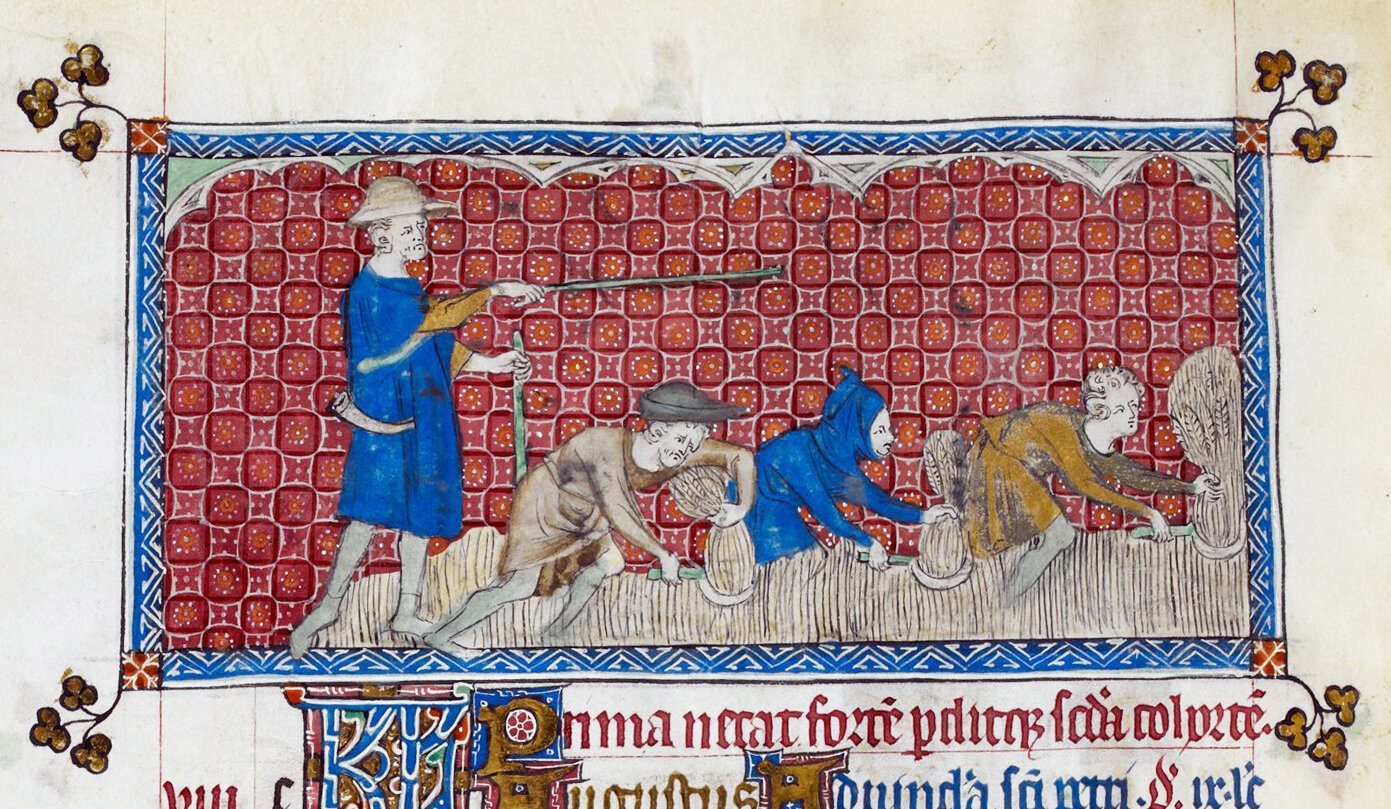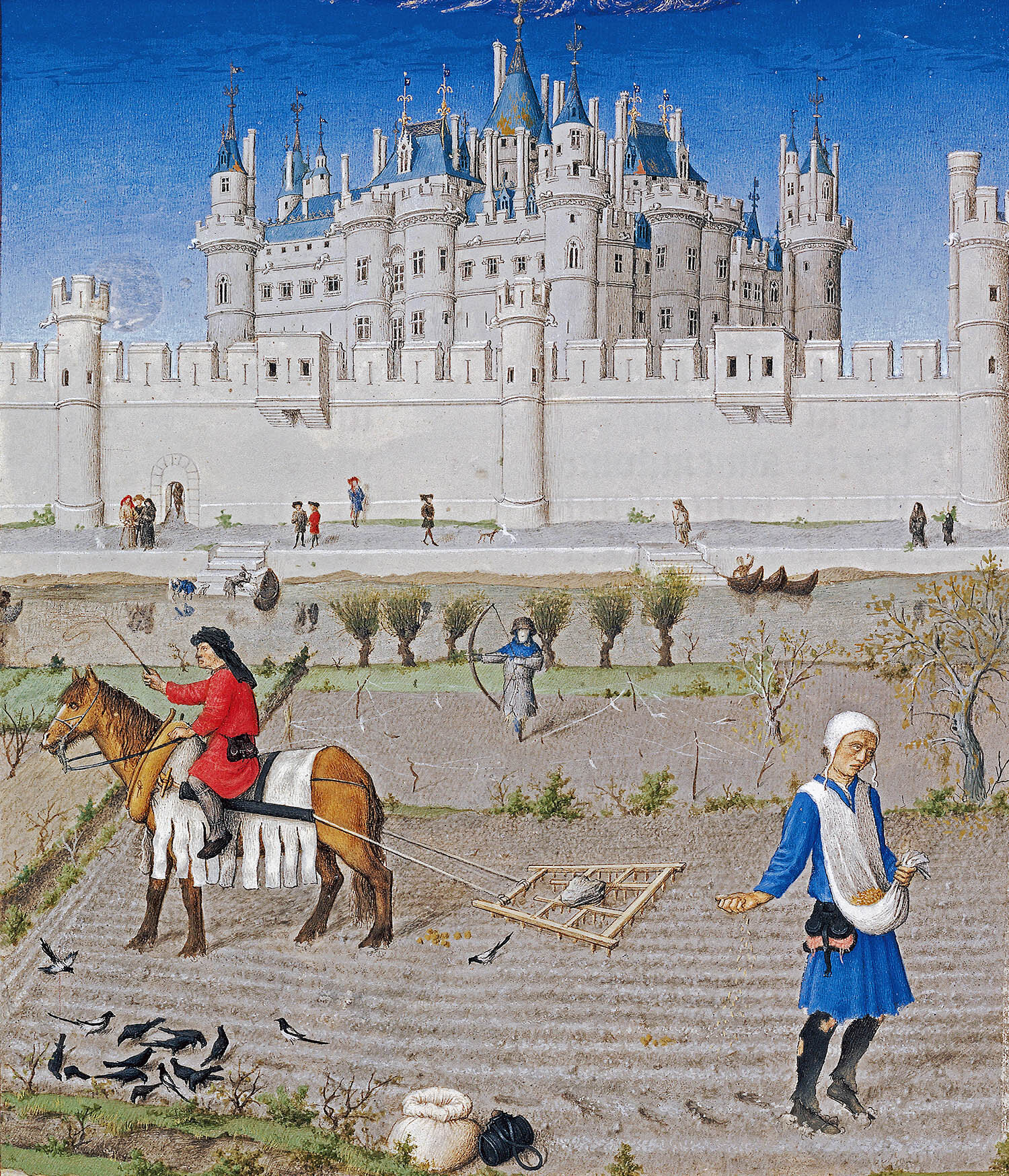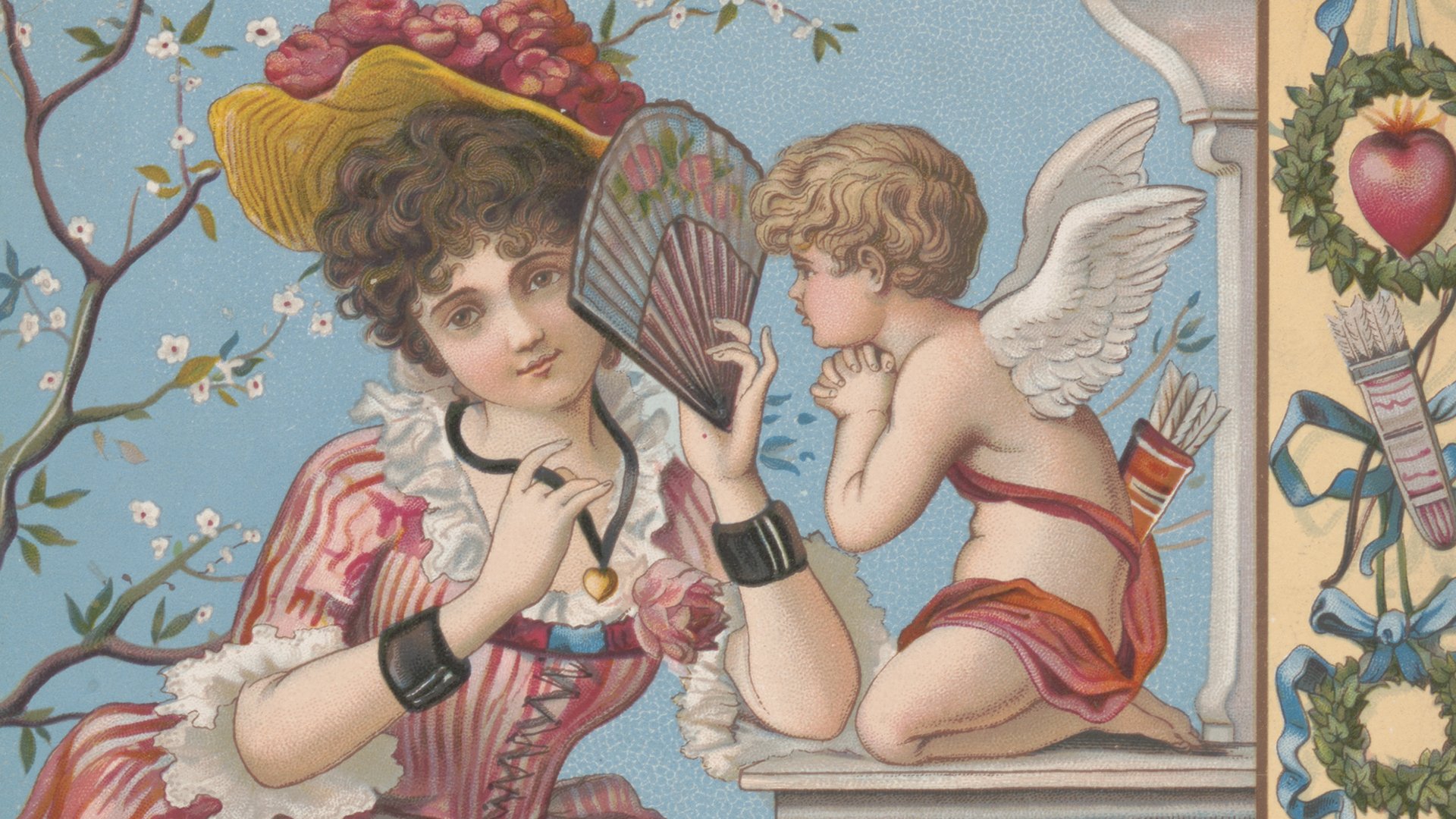The Religious Toil of British Serfs

Serfdom was a hereditary curse, preserved by the Catholic Church.
Cover photo: Detail of a miniature featuring a reeve directing serfs harvesting wheat, Folio 87v of the Queen Mary Psalter, by the Queen Mary Master (circa 1310). Via the British Library.
The Art of Labor
At the height of the Industrial Revolution in the United States, American workers — including children — suffered twelve hour work days and seven day work weeks. Labor Day originated in 1882 as an annual mass rally in New York organized by socialists and leftist organizations to demand shorter hours, higher pay, safer working conditions, and a labor holiday. President Grover Cleveland would declare Labor Day a federal holiday in 1894.
COVID-19 has revealed who are the essential workers and who performs the unnecessary “bullshit jobs”. This once-in-a-century pandemic has also demonstrated the global interdependency of resources, labor, and supply chains — what we commonly refer to as globalization.
Millions of Americans have lost their jobs, and likely their healthcare. This has inspired me to create a new series on the art of labor through the centuries, with a focus on how work has been valued and represented.
South West View of Canterbury Cathedral, lithograph, after L.L. Razé, by George II Hawkins (1841). Via the Royal Collection Trust.
Religion during the Middle Ages
“The Church was the single most dominant institution in medieval life, its influence pervading almost every aspect of people’s lives,” writes Alixe Bovey, the Head of Research at The Courtauld Institute of Art. Emperor Theodosius I declared Catholicism the state religion of the Roman Empire in 380 AD, nearly a century before the empire’s collapse in 476 AD.
“The vastness of the domain and the associated problems of administration, the civil strife of the nobility and the rise of Christianity as an alternative source of authority had fractured the foundations of a once mighty Roman Empire,” writes Associate History Professor at Quaid-i-Azam University, Rabia Umar Ali.
The Roman missionary Saint Augustine is credited with establishing Christianity in England, as he converted the pagan King Ethelbert of Kent in 597 AD who would commission the construction of the Canterbury Cathedral. The cathedral would serve as the spiritual head of the Church of England for nearly five centuries.
Moors later arrived in Spain from North Africa in 711 AD, and established the Caliphate of Córdoba by 929 AD. There, Muslims, Jews, and Christians lived together peacefully, known as the time of La Convivencia — The Coexistence — which would last until 1492.
During the time of the caliphate (929-1031), Spain was the most populous and prosperous country in Europe. The Muslim world contributed so totally during this era that Ali concludes, “in agriculture, geography and warfare, the west had virtually nothing to offer.”
In response to centuries of Muslim territorial expansion, the Christian Crusades began in 1095 and lasted until approximately 1291. During these holy wars, the act of pilgrimage to expel sin was popularized.
“The Crusades linked pilgrimage to reclaiming Christian sites from the Muslims and enhanced pilgrimage in Europe by increasing the number of relics looted and transported home,” summarizes Dana Greene of the Shalem Institute for Spiritual Formation.
Map view of Canterbury, showing the Cathedral, from William Smith’s “Particular Description of England” (1588). Via the British Library.
Medieval England
The collapse of the Roman Empire saw with it the end of the division of labor, reducing western Europe to self-sufficient rural systems. Finally in 927 AD, various Anglo-Saxon kingdoms were united to form the Kingdom of England, ruled by King Æthelstan. To maintain his power, King Æthelstan was known for giving decorated gospel books to influential religious communities.
Feudalism was established by William I after his conquest in 1066. The word feudalism derives from the medieval Latin terms feudalis and feodum, meaning fee and fief, respectively. Upon coronation, William claimed all English land belonged to him and he subsequently divided the lands — or fiefs — between himself, the clergy, and nobility, in return for fees of loyalty and protection. In turn, the clergy and barons served as landlords for the unfree tenant serfs who tended to the soil and paid rent with their surplus.
Under threat of civil war by rebel barons in 1215, King John authorized the Magna Carta or The Great Charter. Magna Carta guaranteed a rule of law, lead to the creation of parliament, and became a foundation for individual rights.
Percentage of Land Ownership in Feudal England
The Three Estates
Medieval society was loosely separated into three estates, as defined by historians: “the ones who pray, the ones who rule and govern, and the ones who work.” Workers were considered of the lowest status. As scholar Derek Brewer explained, “Knights defend society, and maintain law and order; clergy defend men’s souls and feed their minds; ploughmen provide food to maintain men’s bodies.”
The Church also served to maintain the hereditary social hierarchy. As explains scholar Joshua Mark, “Social mobility was extremely rare to nonexistent since the Church taught that it was God’s will one had been born into a certain set of circumstances and attempting to improve one’s lot was tantamount to claiming God had made a mistake.”
Cultural theorist Lynn Parramore writes, “The Church, mindful of how to keep a population from rebelling, enforced frequent mandatory holidays.” Economist Juliet Schor finds that the medieval workday was not longer than eight hours and evidence suggests that the busiest of workers only toiled up to half of the year.
The Canterbury Tales, written in the late 14th century by the poet Geoffrey Chaucer, are classified as estate satire, criticizing the Medieval system and its professions. In Middle English, Chaucer tells the tale of 31 pilgrims travelling from London to Canterbury Cathedral, including the Reeve, a title of lower class administrative officers who supervised the work of peasants. In the General Prologue, Chaucer writes of the Reeve as follows,
Wel koude he kepe a gerner and a bynne;
Ther was noon auditour koude on him wynne.
Wel wiste he by the droghte and by the reyn
The yeldynge of his seed and of his greyn.
His lordes sheep, his neet, his dayerye,
His swyn, his hors, his stoor, and his pultrye
Was hoolly in this reves governynge,
And by his covenant yaf the rekenyge
Chaucer describes the old Reeve as an expert of agriculture and livestock, loyal to his young lord, and terrifying to any who may try to deceive or steal from him. In the meta-narrative, the Reeve counters the Miller’s tale by telling a vulgar story about students who seduce the wife and daughter of a dishonest miller.
Folio 87v with a miniature featuring a reeve directing serfs harvesting wheat, Queen Mary Psalter, by the Queen Mary Master (circa 1310). Via the British Library.
The Queen Mary Psalter
The Queen Mary Psalter is one of the most exquisite illuminated manuscripts ever created. Containing over 1000 images, the Gothic psalm book is a rare document depicting life in medieval England. The delicate calligraphy, designs, and illustrations are unrivalled.
Such an illuminated manuscript required countless hours of labor, precise technical skill, and rare materials such as gold leaf and silver. These materials gave renderings a reflective quality, literally illuminating the pages. The mere creation of such books was itself an act of devotion, originally reserved to literate monks and nuns in the scriptoriums of monasteries.
Diagram of an Illuminated Manuscript Page featuring the Departure of the French Fleet for Castille, by the Master of the Getty Froissart. Via The J. Paul Getty Museum.
The illustrations of illuminated manuscripts are referred to as miniatures — not because of their size — but because they were painted with the red pigment minium. While beautiful, miniatures played a crucial utilitarian role in assisting the illiterate masses in their understanding of the books. Churches and monasteries kept large copies of illuminated manuscripts for parishioners to share in daily prayer.
Wealthy patrons also commissioned their own versions to treasure. By the 14th century, upon increased population literacy and popularity, illuminated manuscripts were created in larger workshops until rendered obsolete by the invention of the printing press and subsequent mass production of Johann Gutenberg’s Bible in the mid 15th century.
The Queen Mary Psalter captures a rare time of stability and relative peace at the turn of the turbulent 14th century. On the folio 87v can be found a miniature depicting a reeve as he directs serfs harvesting wheat with reaping-hooks. This illustration is on a background of a red abstract geometric pattern with elaborate border decoration.
The page is part of the calendar dedicated to the month of August, when such an activity would be common. The wheat is a golden-yellow, ready to be ground into flour. Neither the serfs nor the reeve appear particularly happy to be performing their tasks, as harvest would have been the most labor-intensive activity of the year.
Field of unharvested wheat in Ashby-de-la-Zouch, England, United Kingdom (2012). Photo by Darren Staples / Reuters / Landov and via NPR.
Famine, Plague, Tax, Revolt
The peaceful stability depicted in the Queen Mary Psalter came to an end in 1315, during which historic rains created unfavorable crop conditions: “So great was the rainfall in England during time of harvest that in many places hay could not be cured. The corn that was harvested was not ripe, and the soft grains, damaged by the unceasing rains, had to be dried in vessels before being ground into flour, according to [Johannes de] Trokelowe.”
Hunger was widespread. The next few years came to be known as the Great European Famine, which lasted until 1322. Professor of European History Henry Lucas wrote, “Even the king found it difficult to get food. When Edward II with his household stopped at St Albans at the Feast of St Laurence (August 10), it was practically impossible to procure bread for his court.”
“The generally emaciated condition of their bodies rendered people peculiarly [sic] susceptible to all manner of disease,” Lucas explains. Just a couple decades later — to be spread by rodents — the Black Death would decimate Europe, taking the lives of tens of millions.
The Black Death (1346-1352) is estimated to have killed one third of the English people and possibly over half of Europe’s entire population. The drastic reduction of available workers allowed for bargaining by the peasantry and lead to an inflation in the price of labor which the king immediately sought to legislate against.
King Edward III issued The Statute of Labourers in 1351, declaring that “servants, both men and women, should be obliged to serve in return for the salaries and wages which were customary […] five or six years previously. It was also ordained that such servants who refused to serve in this way should be punished by imprisonment”.
Detail of a miniature depicting the priest John Ball (Jehan Balle) on a horse encouraging Wat Tyler’s (Waultre le Tieulier) rebels from folio 165v of Chronicles of Froissart, by Jean Froissart (before 1483). Via the British Library.
As a result of the ongoing Hundred Years’ War with France, which had begun officially in 1337, the parliament of King Richard II levied poll taxes in 1377, 1379, and 1380. These were flat taxes applied to all people, which therefore disproportionately affected the poor.
The Catholic Church had also suffered a crisis of confidence, as no prayer had been able to spare Europe of the plague. The proto-socialist, reformist priest John Ball inspired and helped organize what would become known as the 1381 Peasants’ Revolt.
According to the contemporary historian Jean Froissart, in one sermon, Ball made a direct appeal to King Richard, asking, “What have we deserved or why should we be thus kept in serfdom? We be all come from one father and one mother, Adam and Eve. How can they claim to prove that they be lords more than us, save by making us produce and grow the wealth that they do spend?”
Ball was excommunicated around 1366 and later imprisoned; he was hung in 1381 alongside the other rebels, following the revolt’s end. While the Peasants’ Revolt did not result in revolution, the event brought about significant reforms such as the abolishment of the poll tax, freedom granted to many serfs, and less parliament intervention in depressing wages. The revolt would mark the start of feudalism’s slow decline.
As written in British magazine The Economist, “Workers were paying lower rents—and had fewer obligations to their lord. Labour services faded out, to be replaced by purely monetary arrangements between employers and employees. These arrangements became customary, and led to the dissolution of feudalism by the 16th century.”











